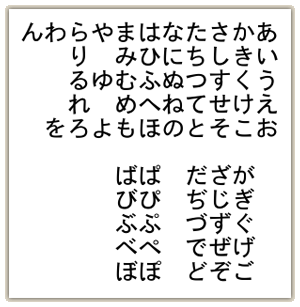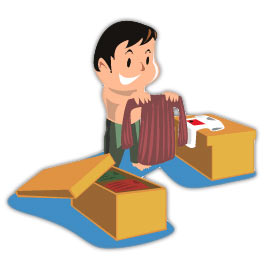It’s time for another installment of Peter’s Japanese Pronunciation Guide. First, understand that Japanese is a syllabic language, meaning that sounds always come in consonant + vowel syllable pairs (e.g. ka, ki, ku, ke, or ko, never just a “k” sound by itself), or as a single vowel syllable. The exception is the letter “n,” the only consonant that can appear by itself, without which we wouldn’t have the word “ramen” (and that would be a travesty). Vowels are easy as pie in Japanese — there are only five, identical to the ones in Spanish. They are:
A – “ah” rhyming with “fall”
I – “ee” rhyming with “feel”
U – “oo” rhyming with “fool”
E – “eh” rhyming with “let”
O – “oh” rhyming with “go”
When you see a word like origami, just break it into syllable-sized chunks, pronouncing all the letters and squeezing it into the “Japanese phonetic grid”: oh-ree-gah-mee. One reason why I always recommend people learn Japanese using hiragana as a base (as in the White Rabbit and Genki products) rather than learning with Romanized Japanese (written in the Roman alphabet) is that the rules of English pronunciation can get in your way, making you think that the third syllable of a name like Tomoe is a “silent e” when it should be in fact pronounced normally. Other things to keep in mind: a “g” sound is always hard (as in go), never soft (as in giraffe). Also, the “R” line of sounds (ra-ri-ru-re-ro) can be challenging at first, since they’re closer to “L” or “D” than “R,” so that the word ramen is about 80% of the way to “lamen,” pronunciation-wise. Remember that J-List has many cool Japanese study products, if you want to give it a try.

The hiragana system is the basis of every sound made in Japanese.















